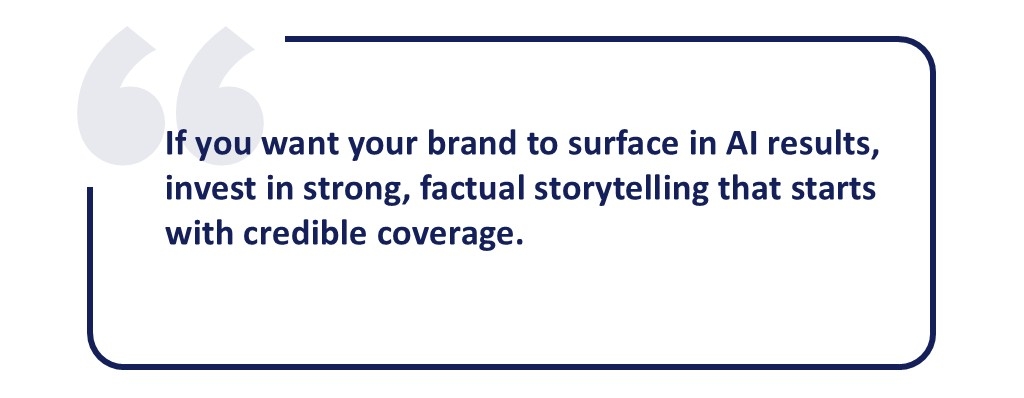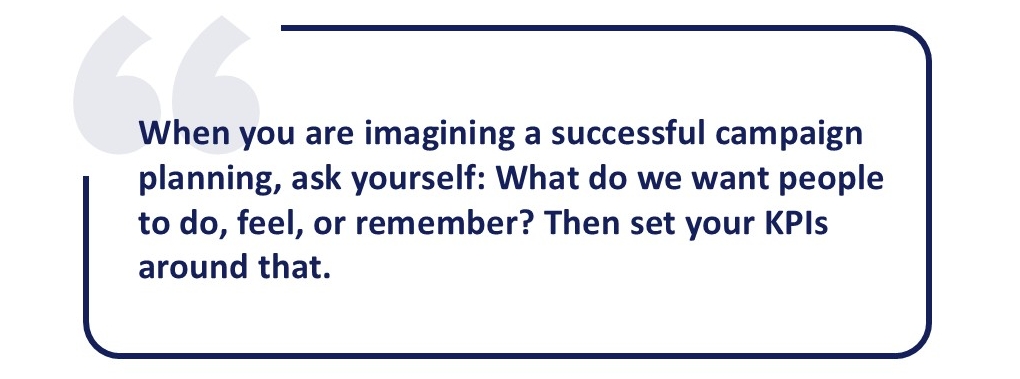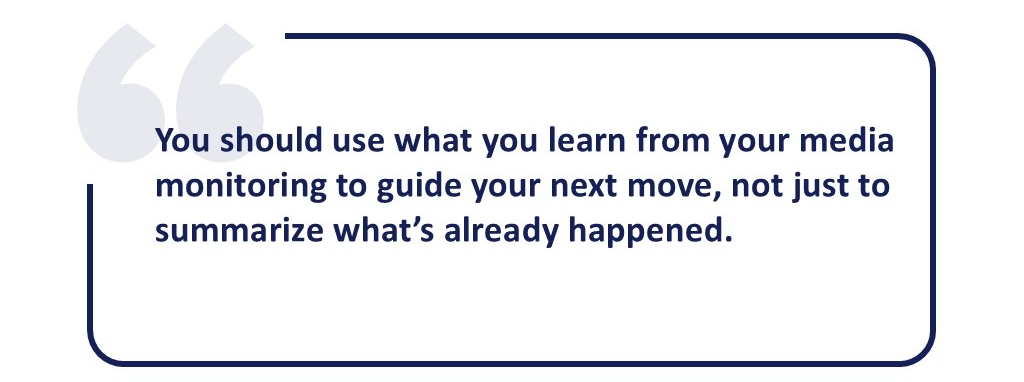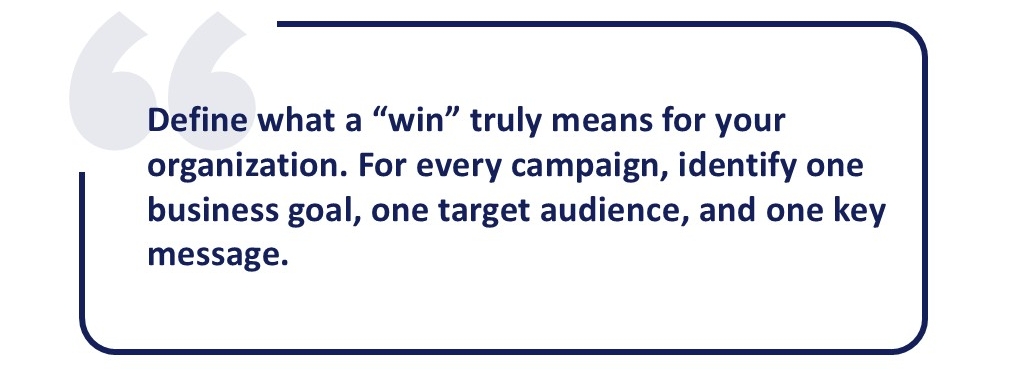This year, PR and comms professionals had to navigate through an unpredictable news environment, global uncertainty, and a shifting media landscape. And that’s not all – according to the 2025 Comms Report, 81% of comms leaders felt the pressure to “do more with less.” Add to that some of their biggest challenges: Being “too reactive vs. proactive" and the inability to measure impact effectively.
And this is just the tip of the iceberg. As Cision’s Madeleine Luchsinger summarizes it, 2025 was “a moving target blindfolded” for communicators. But with this year coming to an end, she says PR and comms professionals have an opportunity to turn the good, the bad, and the ugly into insights that can help us make better decisions in the year ahead.
And that’s exactly what Luchsinger, an insights consultant to leading global brands, covered at our recent in-person event, Building Your 2026 PR Plan: Lessons From 2025 to Guide the Year Ahead. If you couldn’t make it to the event, we’ve put together some of the key takeaways from the discussion, including specific actions you should take when building your 2026 plans.
1. Measure What Matters for Your Campaigns
Meaningful measurement doesn’t mean chasing reach or impressions metrics, especially as they don’t prove business value. We know that’s easier said than done though – our recent survey of over 300 PR and comms pros showed that 44% of comms leaders struggle to align metrics to revenue or business KPIs. So how can you overcome this challenge?
For next year, Luchsinger encourages PR teams to start thinking about turning communications outcomes into business outcomes – tying every campaign to something measurable: Sentiment, conversion, or audience engagement, share of voice, that supports revenue. The key thing to keep in mind is that measurement shouldn’t happen at the end of a campaign – it should guide it from the start. “When you are imagining a successful campaign planning, ask yourself: What do we want people to do, feel, or remember? Then set your KPIs around that,” she notes.
Key takeaway: Don’t just report on PR metrics that have nothing to do with your campaigns. Tie your KPIs back to the core business objectives and prove your impact for the business as a whole.

2. Turn Credibility Into a Long-Term Strategy
Maintaining credibility is a challenge many industries face. Maybe your brand hasn’t been part of a misinformation story, but it will still be affected by the environment of mistrust. So how can you navigate that?
“Keep your messaging consistent and transparent, use credible voices, and back up claims with data. Think quality over quantity,” Luchsinger recommends. She also advises PR teams to make the most of media monitoring tools as they can help you plan and monitor your PR placements and identify any misinformation about your brand early on.
Further, addressing the elephant “in the discussion”, Luschinger says it’s crucial to consider AI’s implications in PR. “Ninety percent of AI-assisted search citations still come from earned media,” Luchsinger points out. “That means journalists and authoritative outlets matter more than ever.” Her advice? “If you want your brand to surface in AI results, invest in strong, factual storytelling that starts with credible coverage.”
She encourages PR teams to start treating credibility as a long-term strategy, not a single campaign goal. Here are three practical steps you can take to strengthen brand authority in this AI-driven landscape:
- Build relationships with authoritative outlets: Identify which publications – both mainstream and trade – your audience and industry peers consider credible. Understand what kind of stories they want and how your brand can add value to those conversations.
- Create informative, insight-rich owned content: Blogs, reports, and data-driven insights on your owned channels should complement your earned media. When AI models (and humans) cross-check information, they look for consistency and depth.
- Monitor share of voice (SOV) and messaging consistency: Use media intelligence to see not only how often your brand appears, but where and how it’s being discussed. If competitors are gaining placements in the right outlets, study what topics or formats are working for them.
Key takeaway: Credibility is not something you tick off your goals list – it should be an ongoing effort. As Luchsinger puts it, “Your goal is to become a trusted voice in your industry’s conversation, not just a source that gets quoted once.”

3. Turn Data Into Action
“Turning data into actionable insight” may seem like straightforward advice – until you consider that 43% of comms leaders cited this very concept as another one of their top challenges this year (according to the 2025 Comms Report). Luchsinger says PR and comms teams have the ability to turn that stat around – by turning that challenge into a goal.
Enter media monitoring – your strategic planning tool. “PR is a data-informed discipline,” Luchsinger notes, “You should use what you learn from your media monitoring to guide your next move, not just to summarize what’s already happened.”
When measuring, think again about quality over quantity. Start by asking yourself these questions:
- What metrics define quality for my brand?
- Which mentions or placements actually drive results?
- Are my key messages landing?
- If so, are they being received the way you intended?
If your key messages are not landing the way you’d expect, this means it’s time to adjust your delivery. That could mean refining your pitch, adapting your tone for a specific audience, or meeting people where they already are – across multiple platforms. The key is consistency and agility at the same time.
Key takeaway: Data is not just about numbers; it’s about what they mean for your brand. When measured effectively, PR metrics can help you readjust your strategies and make more informed decisions.

4. Define Your Wins
As you build next year’s plan (top tip: Use the 2026 PR and Comms Content Planning Calendar to inform campaigns), Luchsinger concludes with a few specific action items you should focus on: “Define what a “win” truly means for your organization. For every campaign, identify one business goal, one target audience, and one key message.”
This doesn’t mean ignoring your secondary objectives, but you should “know your north star:” “Your audiences are already split across different platforms and competing for attention. The clearer and simpler your message, the better your chance of being remembered,” she notes.
“Consistency builds reliability,” she adds “The delivery method might change – maybe a press release becomes a TikTok, or a report becomes an infographic – but the message should always stay the same. When your audience encounters your brand on any channel, they should walk away with the same takeaway. That’s how you build trust, authority, and impact.”
Key takeaway: Focus on clarity and consistency. Be adaptable across platforms but keep your core message the same to build trust and recognition.

Final Thoughts
The challenges PR teams face right now aren’t going away overnight. In fact, more of them could arise. But by applying these four expert tips, you can turn these obstacles into opportunities for strategic growth.
Measure what truly matters for your brand, commit to building credibility, let data guide your decisions, and define clear wins for every campaign. Success in PR in 2026 means staying focused, consistent, adaptable, and data-driven. And when you use AI-powered PR tools like CisionOne providing real-time media intelligence, you’ll have the insights you need to turn your strategic goals into wins.
Want to see how CisionOne can help you put this advice to work? Get in touch and speak to one of our experts today.
Most Recent Posts
Cision Resources
-
E-books and Guides
Comprehensive how-to guides on strategy and tactics
-
Case Studies
What are other brands doing – and how can we learn from them?
About Bianca Parvu
Bianca is the Junior Copywriter at Cision, specializing in tech industry storytelling. She crafts engaging content across digital channels, from thought leadership to email marketing campaigns.
